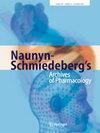关于肠道-肝脏轴以及与肠道微生物群失调相关的非酒精性脂肪肝/NASH 分子基础的最新研究成果。
摘要
最近的研究强调了肠道微生物群、代谢途径和非酒精性脂肪性肝病(NAFLD)进展之间的复杂关系。肠道生态失调常见于NAFLD患者,它损害肠道通透性,导致细菌产物如脂多糖、短链脂肪酸和乙醇易位到肝脏。这些微生物组相关机制有助于肠道和肝脏炎症,可能将NAFLD推进为NASH。饮食习惯,特别是那些富含饱和脂肪和果糖的饮食习惯,可以改变微生物组的组成,导致生态失调和脂肪肝的发展。代谢组学方法已经确定了NASH患者的独特特征,特定代谢物如乙醇与疾病进展有关。虽然减肥手术已显示出预防NAFLD进展的希望,但肠道微生物群和代谢物在这种改善中的作用仍有待证实。了解这些微生物相关途径可能为NAFLD和NASH提供新的诊断和治疗靶点。使用多个医学研究数据库,包括PubMed、Scopus、Web of Science、Embase、Cochrane Library、ClinicalTrials.gov、ScienceDirect、Medline、ProQuest和谷歌Scholar,对当前文献进行了全面的综述。这篇综述的重点是研究肠道微生物群组成、代谢途径和NAFLD进展之间的关系。主要研究领域包括微生物生态失调、内毒素产生以及饮食对肠道微生物群的影响。分析显示,肠道生态失调通过多种机制导致NAFLD,饮食显著影响肠道微生物群组成,进而通过肠-肝轴影响肝功能。高脂肪饮食会导致生态失调,改变微生物代谢活动,促进肝脏炎症。具体来说,肠道菌群介导的饱和脂肪酸(如棕榈酸)的产生可以激活肝巨噬细胞并增加TNF-α的表达,从而促进NASH的发展。不同的饮食成分,包括胆固醇、纤维、脂肪和碳水化合物,可以调节肠道微生物群并影响NAFLD的进展。这条肠-肝轴在维持免疫稳态中起着至关重要的作用,肝脏通过激活先天和适应性免疫反应来应对肠道来源的细菌。微生物代谢物,如胆汁酸、色氨酸分解代谢物和支链氨基酸,调节脂肪组织和肠道稳态,促进NASH发病。此外,NASH患者的微生物组显示酒精生产能力升高,这表明酒精性脂肪性肝炎和NASH之间存在相似之处。这些发现表明,针对肠道微生物群可能是治疗和预防NASH的一种有希望的方法。最近的研究强调了针对肠道微生物群治疗非酒精性脂肪性肝病(NAFLD)的潜力。肠-肝轴在NAFLD病理生理中起着至关重要的作用,生态失调有助于疾病进展。各种旨在调节肠道微生物群的治疗方法已经显示出希望,包括益生菌、益生元、合成菌、粪便微生物群移植和饮食干预。益生菌已在人体随机对照试验中证明有效,而其他干预措施需要在临床环境中进一步研究。这些针对微生物群的治疗可能通过多种机制改善NAFLD的预后,如减少炎症和增强代谢功能。虽然生活方式的改变仍然是NAFLD治疗的主要建议,但以微生物群为重点的干预措施为努力实现减肥目标的患者提供了一个有希望的选择。Recent research has highlighted the complex relationship between gut microbiota, metabolic pathways, and nonalcoholic fatty liver disease (NAFLD) progression. Gut dysbiosis, commonly observed in NAFLD patients, impairs intestinal permeability, leading to the translocation of bacterial products like lipopolysaccharides, short-chain fatty acids, and ethanol to the liver. These microbiome-associated mechanisms contribute to intestinal and hepatic inflammation, potentially advancing NAFLD to NASH. Dietary habits, particularly those rich in saturated fats and fructose, can modify the microbiome composition, leading to dysbiosis and fatty liver development. Metabolomic approaches have identified unique profiles in NASH patients, with specific metabolites like ethanol linked to disease progression. While bariatric surgery has shown promise in preventing NAFLD progression, the role of gut microbiome and metabolites in this improvement remains to be proven. Understanding these microbiome-related pathways may provide new diagnostic and therapeutic targets for NAFLD and NASH. A comprehensive review of current literature was conducted using multiple medical research databases, including PubMed, Scopus, Web of Science, Embase, Cochrane Library, ClinicalTrials.gov, ScienceDirect, Medline, ProQuest, and Google Scholar. The review focused on studies that examine the relationship between gut microbiota composition, metabolic pathways, and NAFLD progression. Key areas of interest included microbial dysbiosis, endotoxin production, and the influence of diet on gut microbiota. The analysis revealed that gut dysbiosis contributes to NAFLD through several mechanisms, diet significantly influences gut microbiota composition, which in turn affects liver function through the gut-liver axis. High-fat diets can lead to dysbiosis, altering microbial metabolic activities and promoting liver inflammation. Specifically, gut microbiota-mediated generation of saturated fatty acids, such as palmitic acid, can activate liver macrophages and increase TNF-α expression, contributing to NASH development. Different dietary components, including cholesterol, fiber, fat, and carbohydrates, can modulate the gut microbiome and influence NAFLD progression. This gut-liver axis plays a crucial role in maintaining immune homeostasis, with the liver responding to gut-derived bacteria by activating innate and adaptive immune responses. Microbial metabolites, such as bile acids, tryptophan catabolites, and branched-chain amino acids, regulate adipose tissue and intestinal homeostasis, contributing to NASH pathogenesis. Additionally, the microbiome of NASH patients shows an elevated capacity for alcohol production, suggesting similarities between alcoholic steatohepatitis and NASH. These findings indicate that targeting the gut microbiota may be a promising approach for NASH treatment and prevention. Recent research highlights the potential of targeting gut microbiota for managing nonalcoholic fatty liver disease (NAFLD). The gut-liver axis plays a crucial role in NAFLD pathophysiology, with dysbiosis contributing to disease progression. Various therapeutic approaches aimed at modulating gut microbiota have shown promise, including probiotics, prebiotics, synbiotics, fecal microbiota transplantation, and dietary interventions. Probiotics have demonstrated efficacy in human randomized controlled trials, while other interventions require further investigation in clinical settings. These microbiota-targeted therapies may improve NAFLD outcomes through multiple mechanisms, such as reducing inflammation and enhancing metabolic function. Although lifestyle modifications remain the primary recommendation for NAFLD management, microbiota-focused interventions offer a promising alternative for patients struggling to achieve weight loss targets.

 求助内容:
求助内容: 应助结果提醒方式:
应助结果提醒方式:


